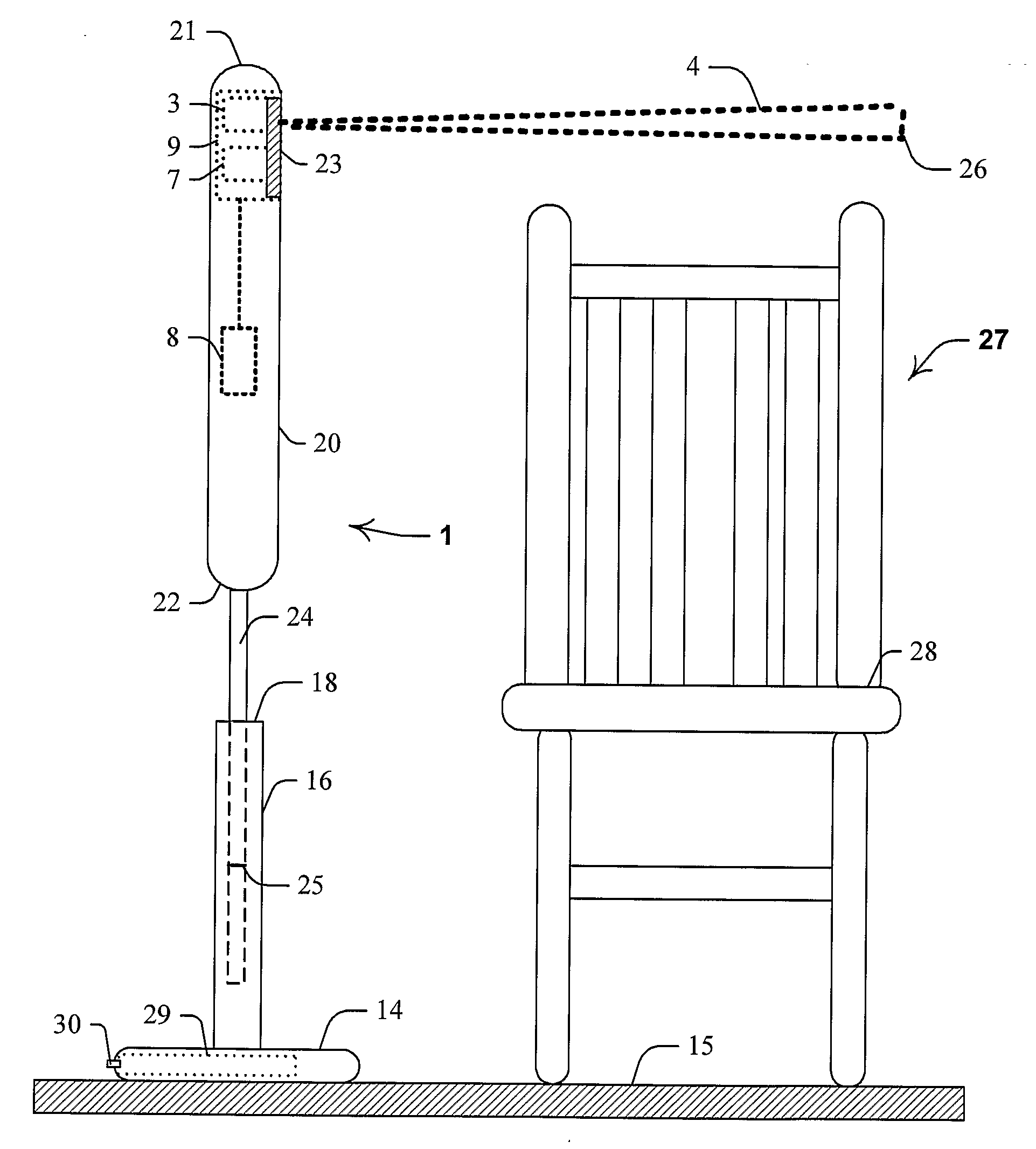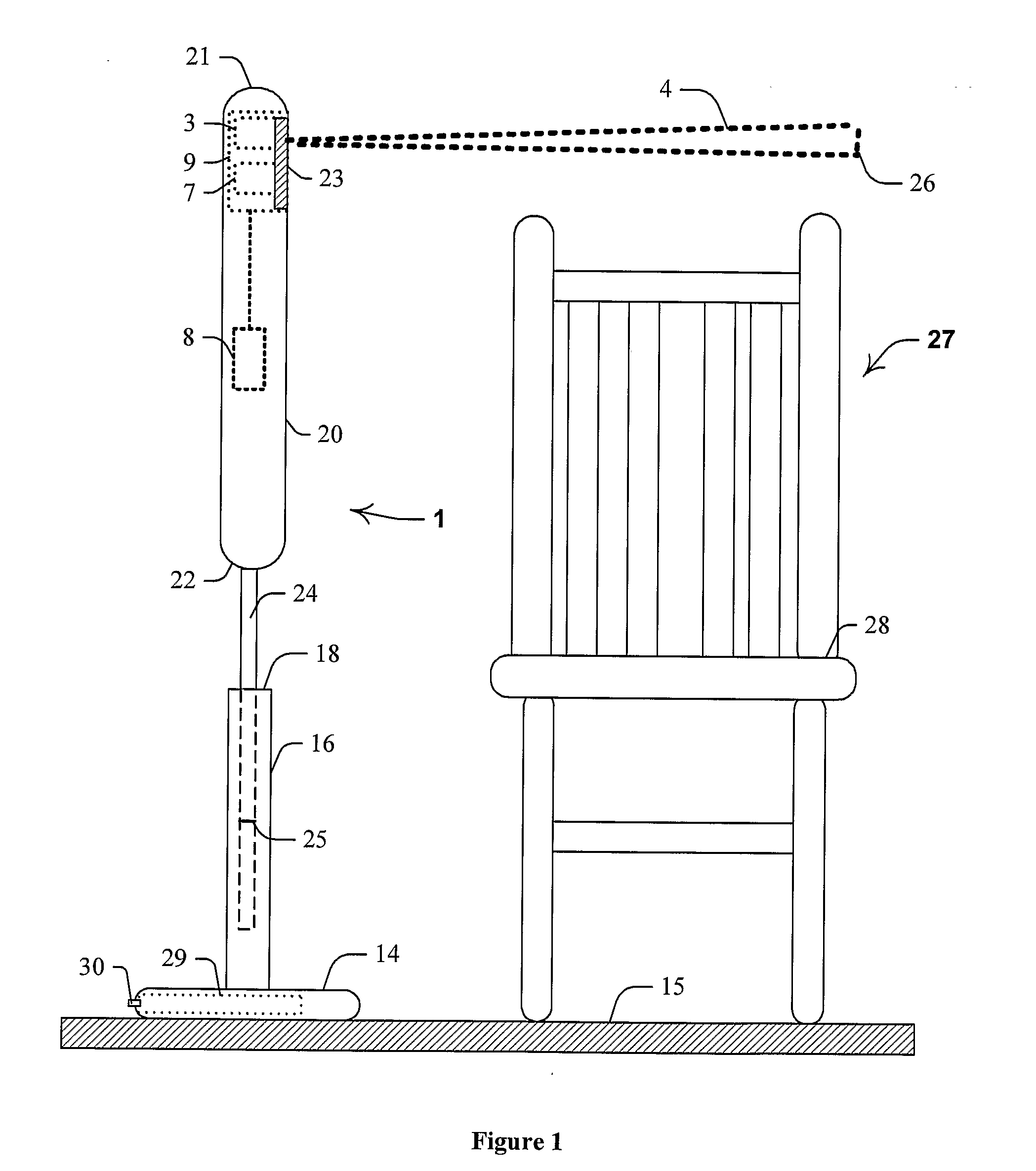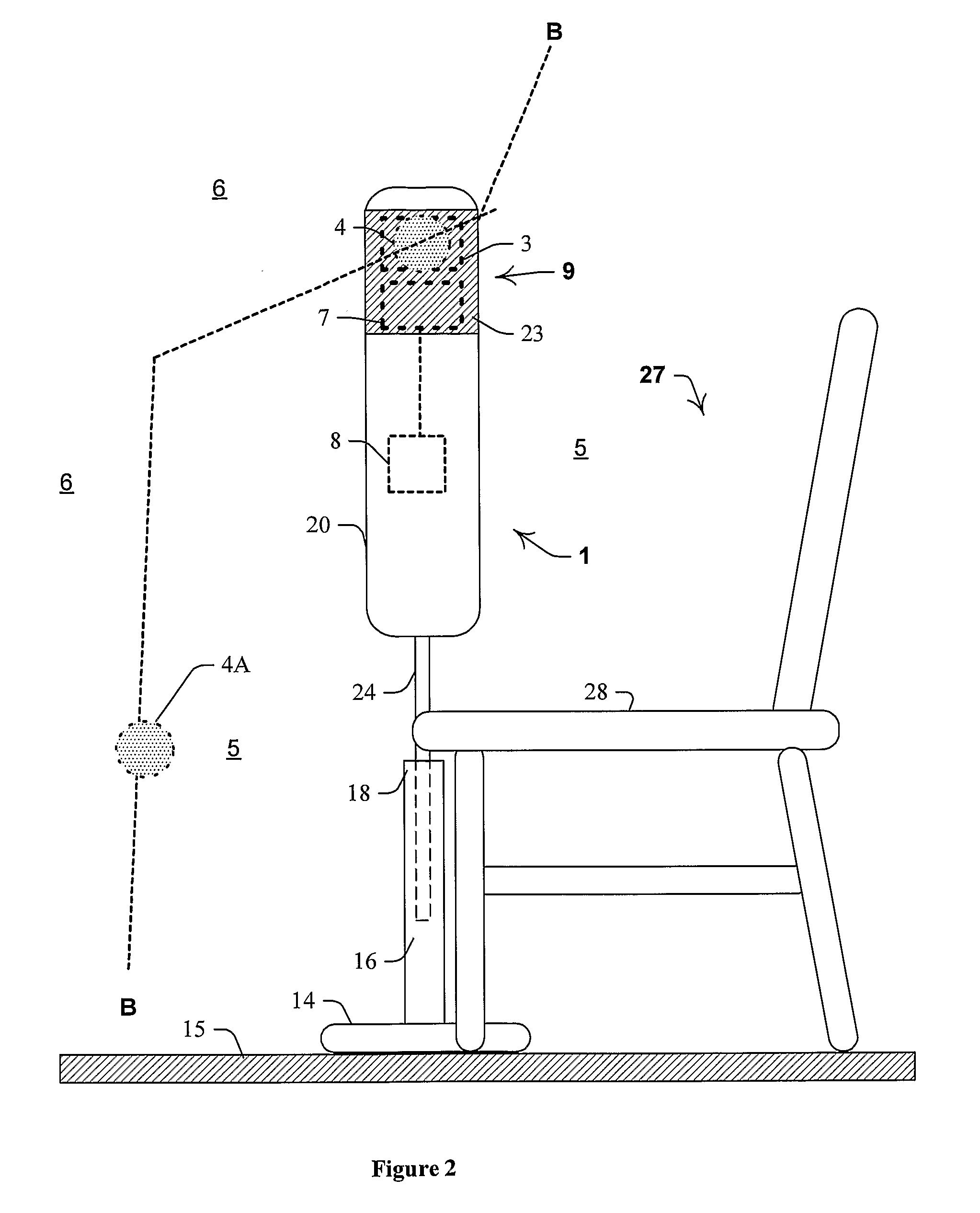Monitoring System
a monitoring system and monitoring technology, applied in the direction of optical detection, sensors, diagnostics, etc., can solve the problems of not being able to administer the highest possible level of personal physical care and support, affecting the movement of carer or carer about the furniture, and heightened risk of not being able to subsequently enabl
- Summary
- Abstract
- Description
- Claims
- Application Information
AI Technical Summary
Benefits of technology
Problems solved by technology
Method used
Image
Examples
Embodiment Construction
[0130]Referring to FIGS. 1 to 3, and in particular to FIG. 1, there is illustrated a self-contained portable freestanding monitoring unit 1 for an individual in the form of a human patient (not shown) in an aged-care facility 2. Unit 1 includes a transmitter 3 for generating a diffuse infrared field 4 that is indicated schematically and generally by broken lines. As best illustrated in FIG. 2, field 4 defines at least part of a boundary B-B between a first region—in the form of a zone 5 that extends generally about a chair—in which the patient is preferentially disposed and a second region—in the form of a zone 7 that is spaced apart from the chair—that is adjacent to zone 5. At least one receiver, in the form of a single infrared receiver 7, generates a movement signal in response to the patient entering field 4. Also provided is an alarm, in the form of an alarm circuit 8, which generates an alert signal in the form of an audible sequence of sounds in response to the movement sign...
PUM
 Login to View More
Login to View More Abstract
Description
Claims
Application Information
 Login to View More
Login to View More - R&D
- Intellectual Property
- Life Sciences
- Materials
- Tech Scout
- Unparalleled Data Quality
- Higher Quality Content
- 60% Fewer Hallucinations
Browse by: Latest US Patents, China's latest patents, Technical Efficacy Thesaurus, Application Domain, Technology Topic, Popular Technical Reports.
© 2025 PatSnap. All rights reserved.Legal|Privacy policy|Modern Slavery Act Transparency Statement|Sitemap|About US| Contact US: help@patsnap.com



